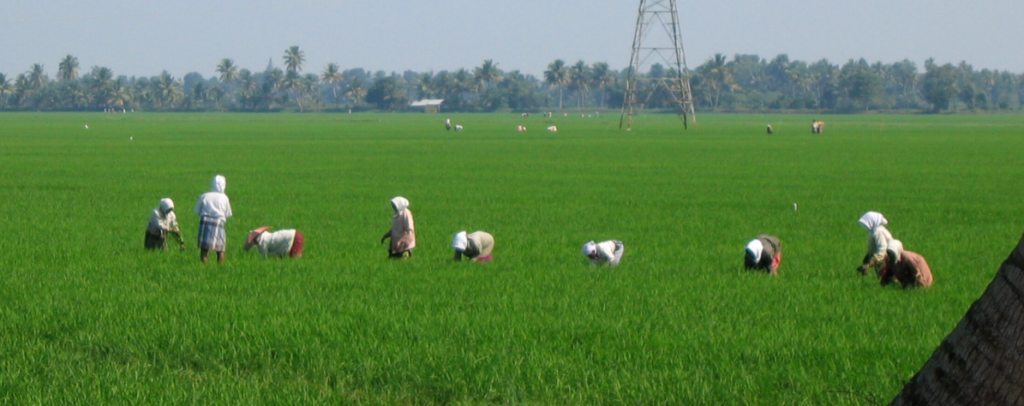Tags
Rice fields of India host valuable, but disappearing, wild edibles

Rice fields across India host a variety of wild, edible plants that Indigenous communities value for their nutritional and medicinal properties. But these “weeds” are rapidly disappearing. To revive them, some individuals and organizations in the country are making efforts to document and preserve their diversity, reports contributor Sharmila Vaidyanathan for Mongabay India.
For instance, Sreedevi Lakshmikutty, co-founder of Bio Basics, an organic brand that champions heritage grains, recently partnered with Shruti Tharayil of the popular Instagram account Forgotten Greens, to share simple recipes pairing foraged greens with indigenous rice varieties, which they say are also disappearing.
“Ironically, both wild edibles and the traditional paddy varieties are looking for acceptance,” Lakshmikutty told Mongabay India. “They are very important for the climate, and preserving them is essential to ensure sustainable food sources. Even in organic cultivation, you don’t find many wild edibles as they are removed in the process of weeding. We want people to start thinking about these foods and use them where possible. Our recipes show that this will not require a drastic shift in their diets.”
Various Indigenous communities depend on wild greens growing in rice fields for their subsistence, using their traditional knowledge to forage for them. For example, scientists from the M.S. Swaminathan Research Foundation (MSSRF) found that in the district of Wayanad in Kerala state, communities use at least 95 species of wild plants from rice fields and surrounding habitats for purposes ranging from curing fever and cough to treating stomach pain.
“Wayanad offers an interesting ecosystem where wild edibles in and around paddy fields can be studied. Several indigenous communities here depend on these plants as they play an important role in their food and medicinal security,” Prajeesh Parameswaran, senior scientist at the MSSRF, Community Agrobiodiversity Centre, told Mongabay India.
But such studies are rare, Vaidyanathan reports. A review published in 2021 by the Centre for Studies in Ethnobiology, Biodiversity, and Sustainability (CEiBa) found that while there are several studies documenting the animal diversity found in rice fields of Asia that’s important in local food cultures, there were few studies recording useful wild floral diversity.
Avik Ray, co-founder and director of CEiBa, told Mongabay India that the diversity of life in rice fields, which help with nutrient cycling and improve overall yields, is disappearing due to “indiscriminate application of pesticides, chemical fertilisers, and weedicides.”
Land-use changes, such as farmers switching from rice to banana and areca nut plantations for better economic returns, is also impacting rice field-related flora. This in turn affects the Indigenous communities, who work as agricultural laborers on these farms, often foraging greens from those fields.
Various initiatives in India are today trying to popularize wild foraged greens found in India’s rice fields, Vaidyanathan reports.
This is a summary of Reviving forgotten wild edibles from paddy fields by Sharmila Vaidyanathan for Mongabay India.
Banner image of a rice field in India by mtkopone via Wikimedia Commons (CC BY 2.0).
https://news.mongabay.com/short-article/2025/02/rice-fields-of-india-host-valuable-but-disappearing-wild-edibles/Published Date: February 17, 2025






